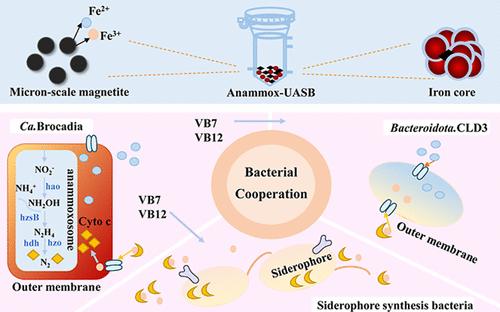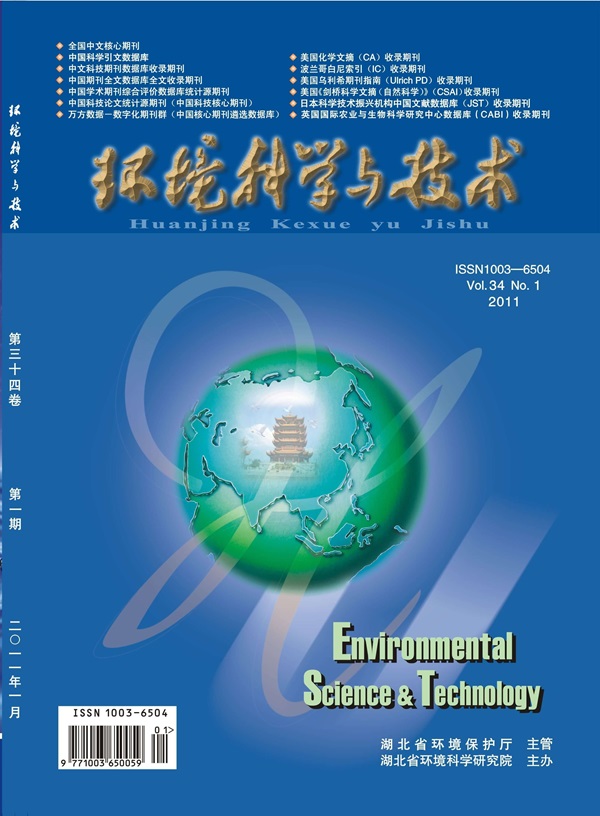Siderophore-Mediated Cooperation in Anammox Consortia
IF 10.8
1区 环境科学与生态学
Q1 ENGINEERING, ENVIRONMENTAL
引用次数: 0
Abstract
It has been widely accepted that iron plays an important role in stimulating the activity of anammox bacteria, which contain many iron clusters for electron transport in cells. However, whether anammox bacteria could directly use and how to uptake Fe(III) have been long-time ignored. Here, we found that micrometer-scale magnetite with the size of 10–20 μm significantly promoted the anammox bacterial activity by iron core and iron uptake. Anammox bacteria cannot utilize Fe(III) directly as they are unable to secrete siderophore for the extracellular Fe(III) transfer to intracellular. In anaerobic anammox consortia at the presence of magnetite, siderophore synthesis bacteria belonging to Alphaproteobacteria, Candidate phylum, and Chloroflexi secreted abundant siderophores, which combined with Fe(III) ionized from magnetite to form siderophore-Fe(III) complexes. These complexes were then used by anammox bacteria via a specific outer membrane receptor and transported by the transporter protein to the periplasm, further releasing Fe(III). Cytochrome c was then formed by the siderophore-Fe(III) complex reduction, for assimilation and synthesis of Fe–S protein and heme B in anammox bacteria to increase electron transfer capability. This study reveals the siderophore-mediated bacterial cooperation in anammox consortia for Fe(III) assimilation and implies the important role of siderophore-mediated cooperation in driving nitrogen conversion in the artificial or natural system.

求助全文
约1分钟内获得全文
求助全文
来源期刊

环境科学与技术
环境科学-工程:环境
CiteScore
17.50
自引率
9.60%
发文量
12359
审稿时长
2.8 months
期刊介绍:
Environmental Science & Technology (ES&T) is a co-sponsored academic and technical magazine by the Hubei Provincial Environmental Protection Bureau and the Hubei Provincial Academy of Environmental Sciences.
Environmental Science & Technology (ES&T) holds the status of Chinese core journals, scientific papers source journals of China, Chinese Science Citation Database source journals, and Chinese Academic Journal Comprehensive Evaluation Database source journals. This publication focuses on the academic field of environmental protection, featuring articles related to environmental protection and technical advancements.
 求助内容:
求助内容: 应助结果提醒方式:
应助结果提醒方式:


